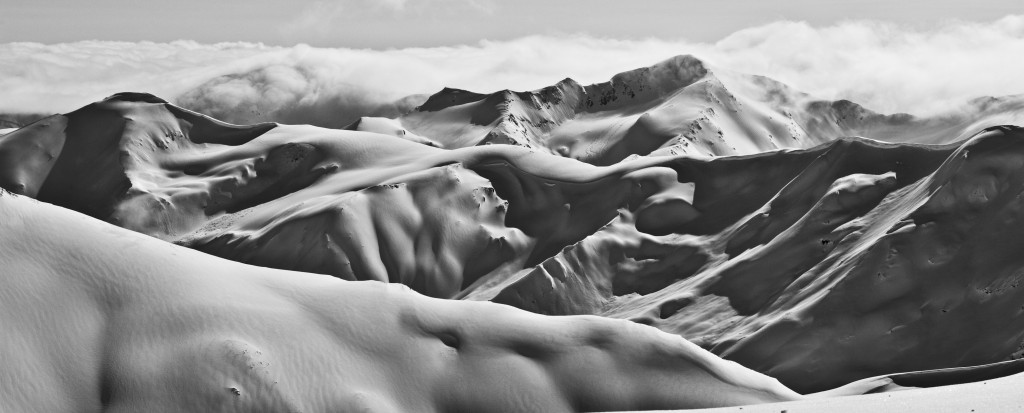Heliskiing Locations: Mountain Ranges
The world is, essentially, made up of mountains and oceans. Some mountains are smaller than others (Denmark’s highest point is Mollehoj at 560 ft; Mt. Everest, the world’s highest, sits at 29,029ft). What matters when it comes to good skiing however, is not so much how high they are – so long as they’re between 5,000 and 15,000 feet – but rather their alignment to the rest of the geographical features surrounding them.
In North America, the Rocky Mountains come immediately to mind as the place to ski. To be fair, the Rockies are no weakling when it comes to snowfall and good weather, but their snowpack is not as stable or deep as some others on this continent, and therefore not as good for heliskiing. On the other side of British Columbia, the Coast Mountains have the deepest and most settled snowpack, with the tamest temperature gradient, making it one of the more stable snowpack’s around. If there is one complaint about heliskiing in the Coast Range, it’s that the weather can be fickle (i.e. stormy whiteouts; not good for helicopters) and the moisture content high (i.e. heavy powder; not ideal for off-piste skiing).

In between the Coast and Rockies is where it gets really good. The mountain ranges of southern and central BC (the Monashees, Kootenays, Purcells, and Bugaboos) receive a phenomenal amount of snow as the clouds rebuild over the interior valleys. Their snowpack lies deep and light, as these mountains are the first line of defense before the moisture disintegrates over the continental divide. Helicopter and cat skiing lodges abound in these regions, as they are relatively accessible and have a fair amount of small-town development scattered throughout. But let’s drift back to the west again, to where it really gets good. The Cariboo-Chilcotin and the Skeena Range make up the eastern slopes of the Pacific Coast Range in BC, and are the goldmines of deep, light and stable champagne powder. Towns like Bralorne, Blue River, Terrace, Smithers, and Bella Coola are blessed with access to these bastions of blower, and skiers, snowboarders, and snowmobilers flock to them year after year to ski and heli ski tour.
There are other mountains in the world as well, of course. Alaska is heliskiing paradise, as ranges like the Chugach and Tordrillo Mountains are absolutely plastered with snowfall (the Chugach averages over 600 inches per season), and generally experience a fair bit of sunshine, especially in the spring months. The southern hemisphere sees it’s share of snow and sun as well; the Chilean and Argentinean Andes are meccas of lift-access and backcountry skiing (heliskiing is growing in popularity), and the snow – especially in Chile – lies dry and deep, again due to the lay of the land.
Even further afield, the European Alps obviously come to mind. But they, like the Himalaya’s to the east, the Caucasus of next-door mother Russia, and the Lyngen Alps of northern Norway, are less inclined to offer up their goods to heliskiers. Backcountry and lift-accessed skiing are either established pastimes or burgeoning pursuits in these places, but it seems as though culture, access, or simply the law will be keeping the heliskiing public mostly relegated to heli skiing Canada for some time. Not that that’s a bad thing – there’s plenty of great mountains to be skied on this side of the Atlantic.
Words by: Theo Birkner
Heli Skiing, Heliskiing, Heli Ski, Heliski, Heli Skiing Tour, Heli Skiing Holiday, Heli Skiing BC, Heli Skiing Resorts, Heli Skiing Lodges


